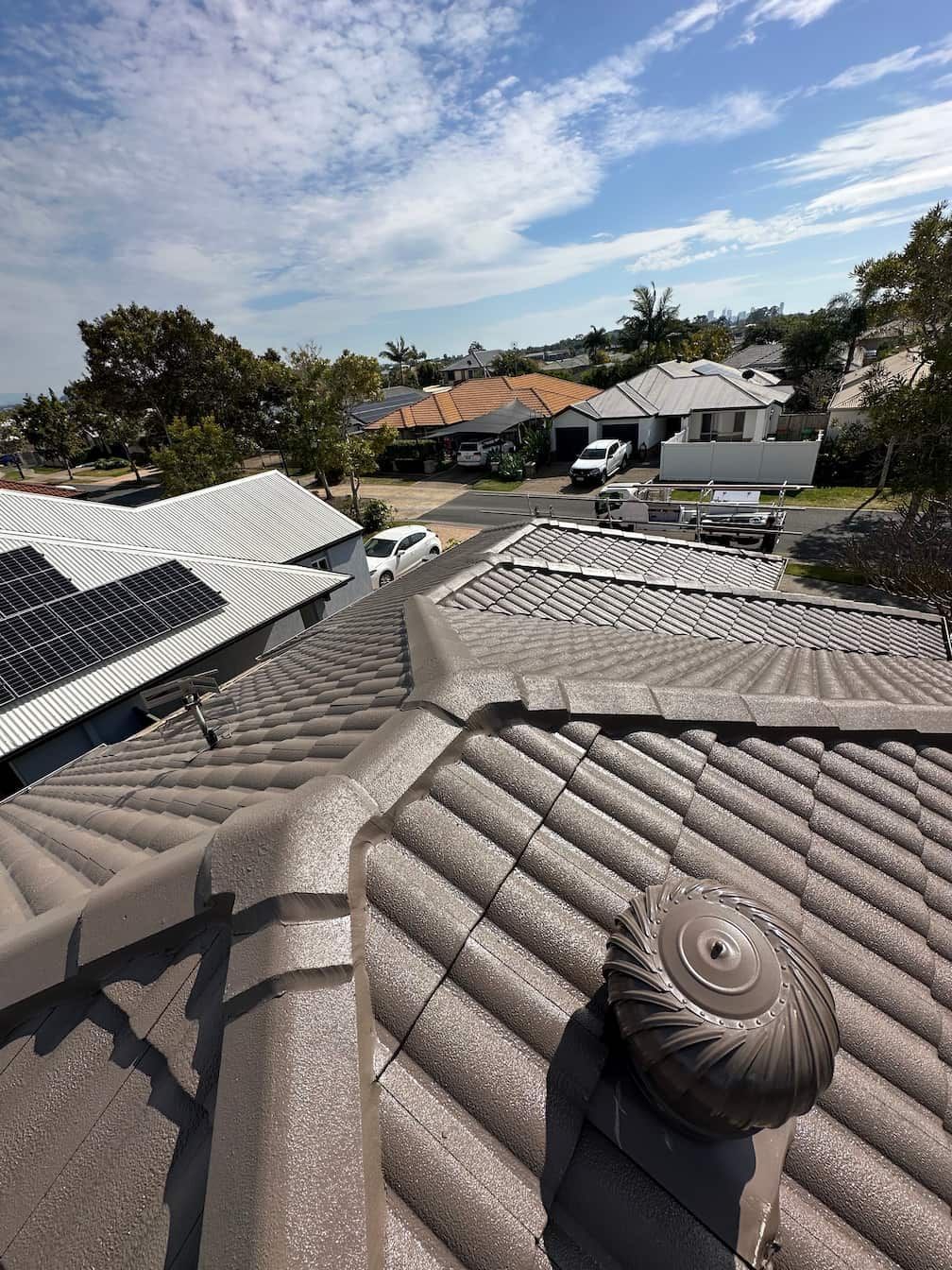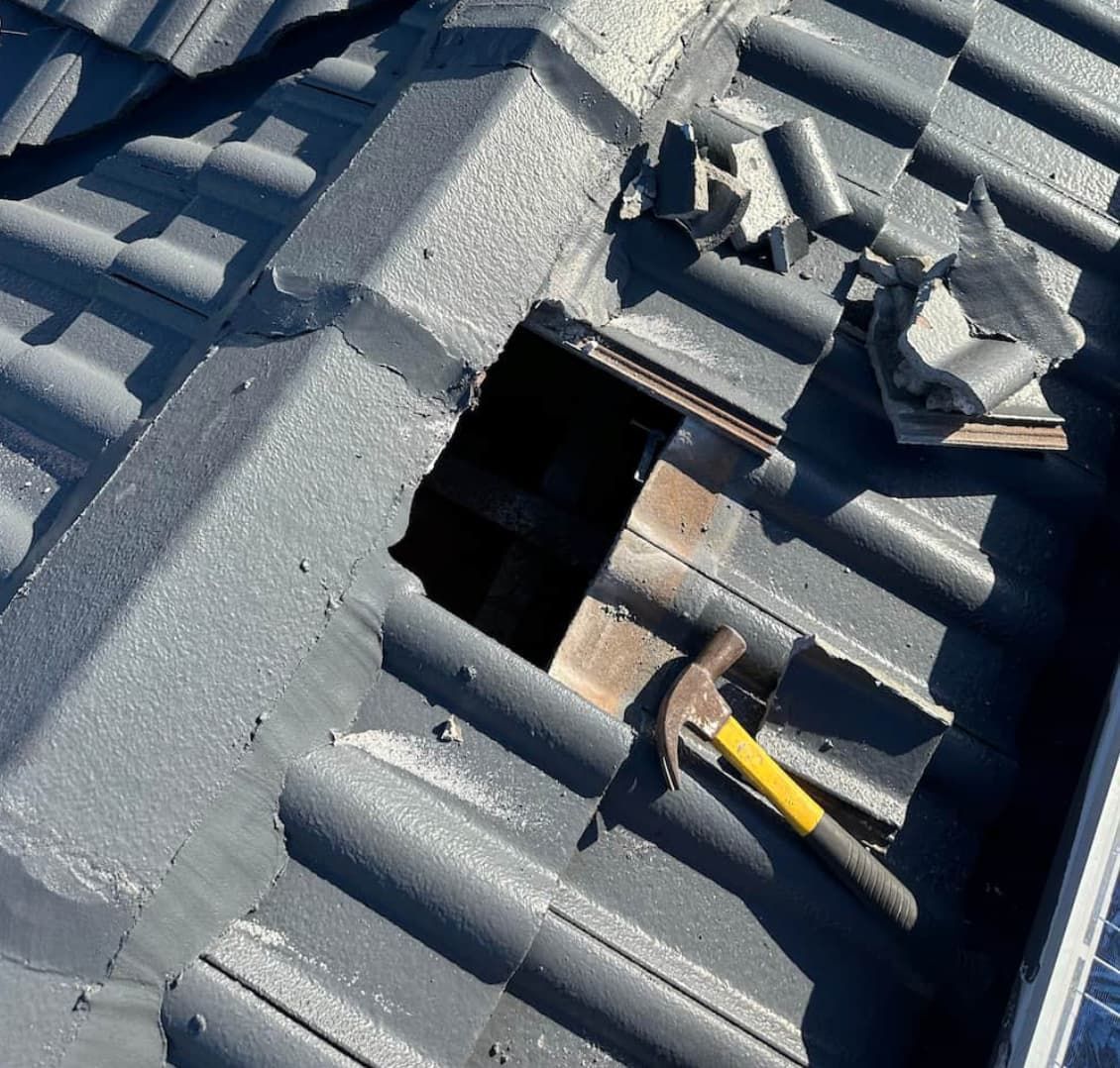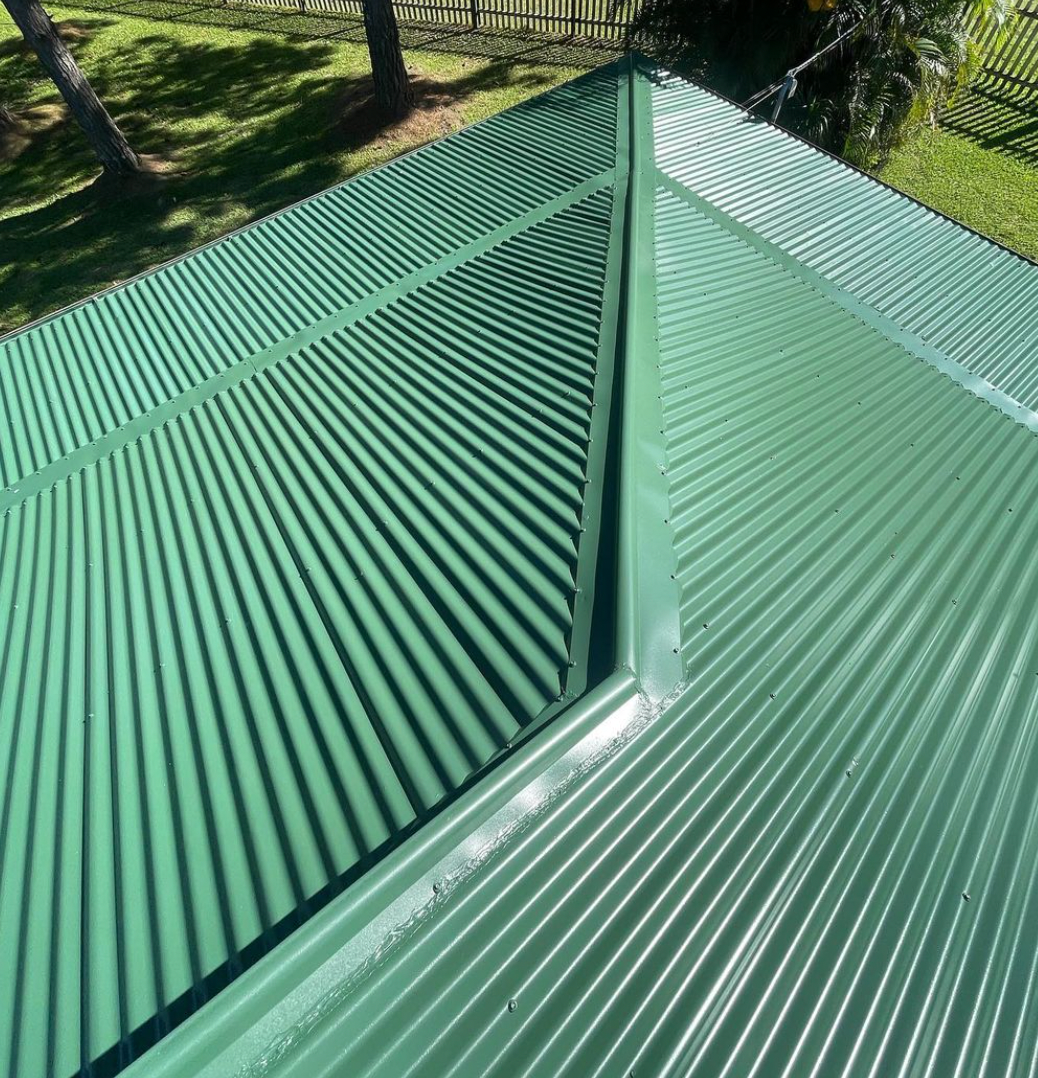How To Prepare Your Roof For Rain
In South East Queensland, sudden downpours and summer storms are part of life. While we often worry about flooding or wet floors, your roof is your home’s first line of defence—and it needs to be in optimal shape to handle the elements. Preparing your roof for heavy rain can prevent leaks, structural damage and costly repairs.
Whether you’ve got a Colorbond roof, tile roof or metal sheets, this guide will walk you through how to get your roof storm-ready and keep your home safe and dry.
1. Inspect Your Roof for Visible Damage
Start with a visual inspection of your roof. Look for cracked, missing or slipped tiles, rust spots, damaged flashing or any signs of sagging. If you have a metal roof, pay attention to areas where screws or nails may have come loose.
Common signs of roof wear before rain:
- Loose ridge capping
- Dislodged or broken tiles
- Rusted screws or sheet edges
- Cracks around vents or skylights
- Sagging rooflines or pooling areas
Spotting these issues early allows you to address them before water finds its way in.
2. Clear Gutters and Downpipes
Clogged gutters are one of the biggest culprits for water backing up under rooflines and causing leaks. When gutters are filled with leaves, mud or debris, water can’t drain properly—leading to overflow and damage to your fascia, walls and foundations.
To prepare for rain:
- Remove leaves and sticks from gutters and valleys.
- Flush gutters with water to ensure they’re draining freely.
- Check that downpipes direct water away from your home’s base.
- Consider installing gutter guards if trees overhang your roof.
Gutter cleaning is a simple but crucial task that can save thousands in potential water damage.
3. Check Flashing and Seals
Roof flashing is the thin metal sheet that protects vulnerable areas—such as around chimneys, skylights or vents. Over time, flashing can warp, crack or lift, especially in harsh Australian sun and wind.
Check for:
- Rust or corrosion
- Lifting or curling edges
- Gaps where water could enter
- Cracked sealant or silicone
Any compromised flashing should be repaired or replaced to prevent water intrusion during a storm. Don’t forget to inspect seals around antennae, solar panels or satellite dishes too.
4. Trim Overhanging Tree Branches
Branches hanging over your roof aren’t just a leaf-dropping nuisance—they’re a real hazard during heavy rain and high winds. In a storm, branches can snap, fall and damage roofing materials, solar panels or gutters.
Tree maintenance tips:
- Trim back branches at least 1–2 metres from your roofline.
- Remove dead or weak limbs that could break in a storm.
- Hire a qualified arborist if large trees pose a risk to your property.
This also reduces how quickly your gutters fill up with organic debris.
5. Pressure Wash Moss, Mould & Debris
Organic matter like moss, mould and built-up dirt can trap moisture on your roof, leading to rot, leaks and reduced durability of materials.
Benefits of pressure washing your roof:
- Removes harmful growths and dirt
- Restores proper water flow into gutters
- Prolongs the life of your roofing materials
- Helps identify cracks or hidden issues
Use a professional pressure washing service that knows how to clean your roof without causing damage. Soft washing may be a better option for tiled roofs to prevent cracks or breakage.
6. Examine the Roof from Inside
If you have roof access via an attic or ceiling cavity, look inside for warning signs of leaks or poor ventilation. Use a torch to inspect areas around vents, chimney flues and where the roof joins the walls.
Warning signs:
- Water stains or damp patches
- Light shining through holes or gaps
- Mould or mildew smells
- Sagging insulation or ceiling panels
Catching these issues early means you can repair minor leaks before the next storm hits.
7. Ensure Proper Drainage Around the Home
Even with a watertight roof, poor drainage around your home’s foundation can still cause problems. Check that downpipes are directed well away from the house and that garden beds or landscaping don’t funnel water toward your walls.
What to look out for:
- Pooling water near your house after rain
- Downpipes with missing or broken outlets
- Blocked or slow stormwater drains
Consider installing extensions or rainwater diverters to redirect stormwater safely.
8. Book a Professional Roof Inspection
If you’re unsure about the condition of your roof—or you simply want peace of mind before storm season—it’s a good idea to call in the professionals. A licensed roofing contractor can conduct a detailed inspection and recommend any maintenance or repairs.
This is particularly important for older roofs or if you've recently experienced extreme weather events.
Why Roof Prep Is Critical in South East Queensland
Our subtropical climate means roofs are exposed to intense sun, sudden downpours, and frequent storms. Regular maintenance helps protect your home from:
- Internal leaks and ceiling damage
- Mould growth due to trapped moisture
- Wood rot in structural components
- Damaged insulation and electrical systems
- Expensive emergency repairs after major rain events
Conclusion: Don’t Wait for the Rain to Start
Your roof works hard to protect your home—but it can’t do its job if it’s neglected. A few simple steps before the next heavy rain can make all the difference.
From gutter cleaning and tree trimming to pressure washing and roof inspections, taking proactive action now means fewer headaches later. If you need help getting your roof rain ready, get in touch with Refresh Roof & Exterior Restorations on the Gold Coast.
Written by Reece Worboys
Reece has been in the Gold Coast roofing game for over 15 years and is a trade-qualified roof plumber and painter/decorator. He's also a QBCC licensed supervisor and roofing contractor.







